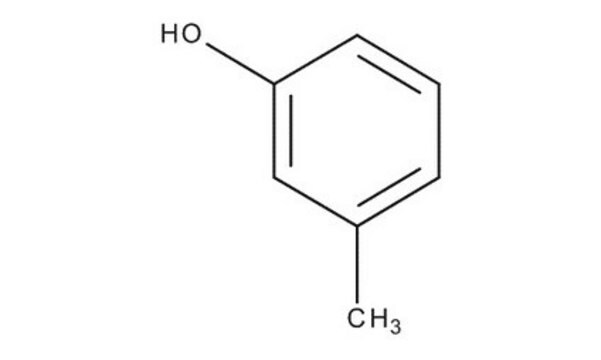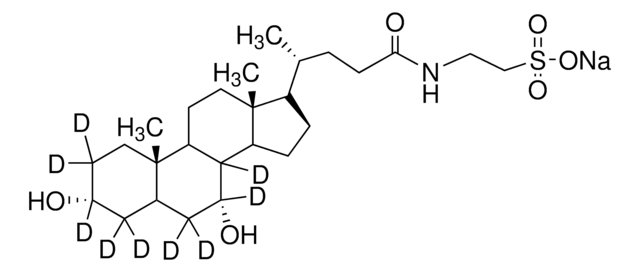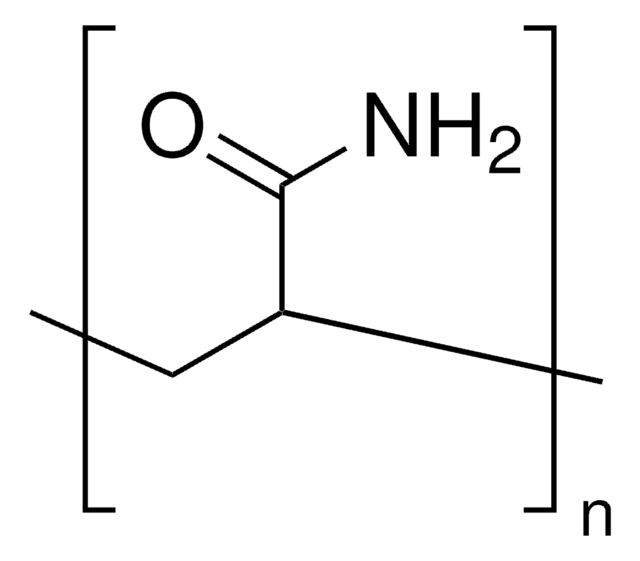C85727
m-Crésol
99%
Synonyme(s) :
1-Hydroxy-3-methylbenzene, 3-Hydroxytoluene, 3-Methylphenol
About This Item
Produits recommandés
Agence
suitable for SM 2310
suitable for SM 2320
Densité de vapeur
3.72 (vs air)
Pression de vapeur
<1 mmHg ( 20 °C)
Essai
99%
Forme
liquid
Température d'inflammation spontanée
1036 °F
Limite d'explosivité
1.06-1.35 %, 150 °F
Indice de réfraction
n20/D 1.541 (lit.)
pb
203 °C (lit.)
Pf
8-10 °C (lit.)
Densité
1.034 g/mL at 25 °C (lit.)
Chaîne SMILES
Cc1cccc(O)c1
InChI
1S/C7H8O/c1-6-3-2-4-7(8)5-6/h2-5,8H,1H3
Clé InChI
RLSSMJSEOOYNOY-UHFFFAOYSA-N
Vous recherchez des produits similaires ? Visite Guide de comparaison des produits
Catégories apparentées
Application
- Porous porphyrin-based polyimides for selective CO2 capture.
- Thermoplastic polymers via thiol-ene Click reactions.
Mention d'avertissement
Danger
Mentions de danger
Classification des risques
Acute Tox. 3 Dermal - Acute Tox. 3 Oral - Aquatic Chronic 3 - Eye Dam. 1 - Skin Corr. 1B
Code de la classe de stockage
6.1A - Combustible acute toxic Cat. 1 and 2 / very toxic hazardous materials
Classe de danger pour l'eau (WGK)
WGK 2
Point d'éclair (°F)
186.8 °F - closed cup
Point d'éclair (°C)
86 °C - closed cup
Faites votre choix parmi les versions les plus récentes :
Déjà en possession de ce produit ?
Retrouvez la documentation relative aux produits que vous avez récemment achetés dans la Bibliothèque de documents.
Les clients ont également consulté
Notre équipe de scientifiques dispose d'une expérience dans tous les secteurs de la recherche, notamment en sciences de la vie, science des matériaux, synthèse chimique, chromatographie, analyse et dans de nombreux autres domaines..
Contacter notre Service technique






